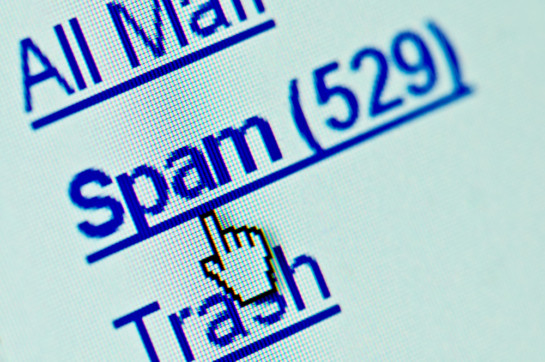You Kids Stay Outta The Spam Folder

 Spam. Nobody likes receiving it, nobody likes being considered a spammer. But as users of any email marketing tool can tell, sometimes constituents will mark your messages as spam anyway.
Spam. Nobody likes receiving it, nobody likes being considered a spammer. But as users of any email marketing tool can tell, sometimes constituents will mark your messages as spam anyway.
Why? Well, it goes to constituent perception. You may have heard the expression “Spam is in the eye of the beholder.” If someone doesn’t believe that they signed up for your list – even if they did – and it’s too hard to find the unsubscribe link, then they’re just as likely to hit the “REPORT SPAM” button.
As numerous procedural crime dramas have noted, the human memory can be notoriously faulty. Someone who signed themselves up for an email list can forget they did it – especially in the year 2012 when electronic and web signup forms are pervasive.
In the interests of staying out of the spam folder, here are some tips:
Problem 1 – long lag time between paper signature collection and welcome email. If you’re collecting signatures on a paper petition, make sure you data-enter those names right away. If you send them to a data entry firm, they key them in upload them to the donor database and sync to your email system, 4-8 weeks can pass between the time of signature and the first welcome email. That’s way too long – who will remember signing the petition at the street festival two months ago?
Solution – do data entry the next day directly into the email system. Even though it’s harder to do diligent data entry every night, it will go a long way to reducing your spam rates. And you might even see an uptick in engagement and donations by the prompt followup if you strike while the iron is hot!
Problem 2 – generic welcome message that doesn’t trigger the memory of having signed up. Many organizations put a lot of time into designing their welcome series, and want to get the most mileage they can out of it. When faced with a large number of new names from a specific event or online channel, it’s tempting to just dump the names into the generic welcome message stream. But if the person is already having memory problems, a generic message won’t help.
Solution – state the event or channel in the welcome message. Luckily, if you have a solid welcome message, you can alter it slightly. Just add an introductory paragraph – sometimes called a “love note,” if it’s located above the email stationery – that states “Thank you for signing up for our email list at the Earth Day 2012 Celebration in Sioux City” or “Thanks for joining our email list through the signup box on our coalition’s website.”
Problem 3 – can’t find the unsubscribe link. Most organizations make their unsubscribe link a sutble design in the footer of the email stationery, and that’s okay. But it can be hard to find, and if someone’s in a hurry, they might not bother looking.
Solution – add an unsubscribe link in the body of the first paragraph. Add a sentence to your love note: “If you changed your mind and don’t want to be on the list, just click here to unsubscribe.” Yes, you don’t WANT them to unsubscribe – but do you want an unhappy person on your list, or for them to hit the “Report Spam” button?
Put these methods into practice and monitor the results for 3-6 months. I’ll bet that you’ll see improvement!
What are some other ideas you’ve tried for reducing spam complaints?


